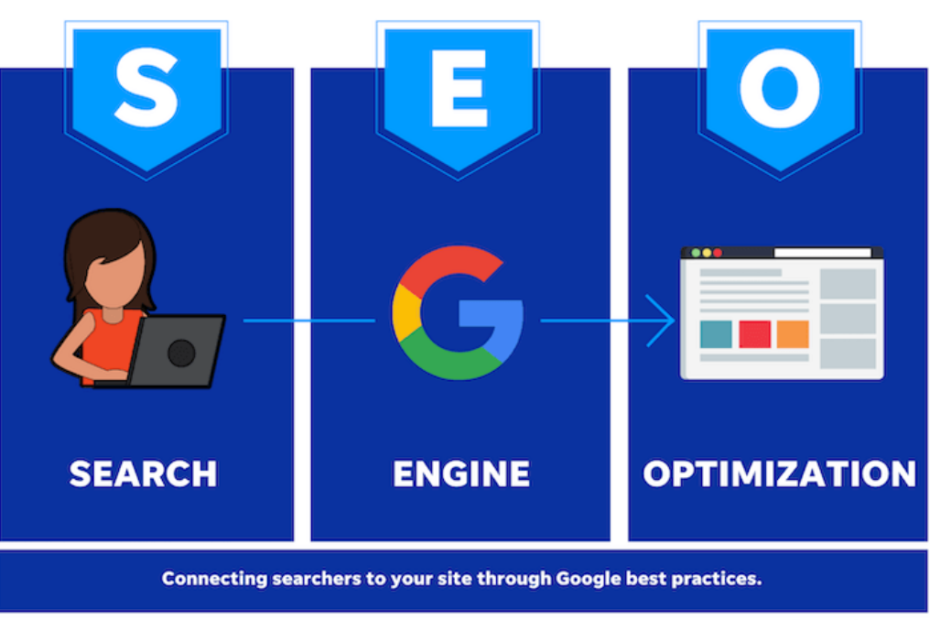Search Engine Optimization (SEO) is crucial for increasing the visibility of your website in search engine results. Higher rankings can lead to more traffic, which can convert to more customers or readers. Here’s a comprehensive guide on how to optimize your website for Search Engine Optimization.
Optimizing your website for Search Engine Optimization is a continuous process that requires dedication and a strategic approach. By leveraging the expertise of companies like Enozom and following these detailed tips and tricks, you can significantly improve your website’s visibility, drive more organic traffic, and achieve your business goals. Focus on keyword research, on-page and technical SEO, content creation, off-page SEO, and regular monitoring to stay ahead in the competitive digital landscape.
1. Understand SEO Basics
SEO involves optimizing your website to rank higher on search engine results pages (SERPs). The key elements include:
- Keywords: Words and phrases that people use to search for information online.
- On-Page SEO: Optimizing content and HTML source code on your website.
- Off-Page SEO: Activities outside your website, such as backlinks from other sites.
- Technical SEO: Ensuring your website meets technical requirements of search engines for crawling and indexing.
2. Keyword Research
Identifying the right keywords is fundamental to SEO. Here’s how to do it:
- Brainstorm Potential Keywords: Think about what your target audience might search for.
- Use Keyword Research Tools: Tools like Google Keyword Planner, SEMrush, and Ahrefs can help identify popular keywords and phrases.
- Analyze Competitors: Look at the keywords your competitors are ranking for and consider if they are relevant to your site.
- Long-Tail Keywords: Focus on longer, more specific phrases that have lower competition.
3. On-Page SEO Optimization
On-page SEO involves optimizing individual pages to rank higher. Key aspects include:
- Title Tags: Include your primary keyword and keep it under 60 characters.
- Meta Descriptions: Summarize the page content, including relevant keywords, within 160 characters.
- Headings (H1, H2, H3): Use headings to structure your content and include keywords naturally.
- URL Structure: Keep URLs short, descriptive, and include keywords.
- Internal Links: Link to other relevant pages on your site to keep users engaged and improve SEO.
- Content Quality: Ensure your content is informative, engaging, and free of errors. Use keywords naturally and avoid keyword stuffing.
- Image Alt Text: Use descriptive alt text for images, incorporating keywords where appropriate.
4. Technical SEO
Technical SEO ensures that your website can be crawled and indexed by search engines. Key areas include:
- Mobile-Friendliness: Ensure your site is responsive and works well on mobile devices. Use Google’s Mobile-Friendly Test to check.
- Site Speed: A fast-loading site improves user experience and SEO. Use tools like Google PageSpeed Insights to identify and fix issues.
- Secure Site (HTTPS): Use HTTPS to ensure your site is secure, which is a ranking factor for Google.
- Sitemap: Submit a sitemap to search engines to help them index your site more effectively.
- Robots.txt File: Use this file to control which pages search engines can crawl.
5. Content Creation and Optimization
Content is king in SEO. To optimize your content:
- Create High-Quality Content: Provide valuable, original, and relevant information.
- Regular Updates: Keep your content up-to-date to maintain relevance.
- Use Multimedia: Incorporate images, videos, infographics, and other multimedia to engage users.
- User Intent: Focus on meeting the needs of users by addressing their queries comprehensively.
6. Off-Page SEO
Off-page SEO helps improve your site’s authority and relevance through:
- Backlinks: Acquire high-quality backlinks from reputable sites. This can be achieved through guest blogging, partnerships, and creating shareable content.
- Social Media Marketing: Promote your content on social media to increase visibility and attract backlinks.
- Online Directories: List your website in relevant online directories and industry-specific sites.
7. Monitoring and Analytics
Continuous monitoring and analysis are crucial for SEO success:
- Google Analytics: Track website traffic, user behavior, and conversions.
- Google Search Console: Monitor indexing status, search queries, and fix issues.
- SEO Tools: Use tools like Ahrefs, SEMrush, and Moz to track keyword rankings and analyze competitors.
Conclusion
SEO is a long-term strategy that requires ongoing effort and adaptation to stay ahead of competitors. By focusing on keyword research, on-page and technical SEO, content creation, off-page SEO, and continuous monitoring, you can improve your website’s visibility and attract more organic traffic. Implement these tips and tricks to optimize your website for better SEO performance.
